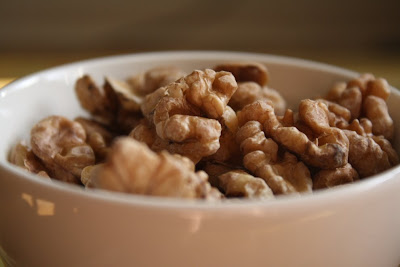
It was my roommate's birthday last week so, of course, I baked her a cake. I asked her what kind she wanted and she said she didn't really care so long as it had pink frosting. My go to cake is my mother's Cocoa Fudge Cake. It calls for buttermilk and I had been waiting for an opportunity to use my own (I had made butter two days previously and had not yet used the buttermilk) and lo, the universe provided me with one. Or Hannah did. Or I did by deciding to make the Cocoa Fudge Cake.
Cocoa Fudge Cake
For two 8-inch layers
- 2 cups flour
- 1 1/2 cups sugar
- 2/3 cup cocoa
- 1 1/2 tsp.baking soda
- 1 tsp. salt
- 1 1/2 cups buttermilk
- 1/2 cup butter
- 2 eggs
- 1 tsp. vanilla
- My mother's instructions read as follows: 350° oven. Measure all ingredients. Blend 1/2 minute; beat 3 minutes. Bake oblong 35-40 min.; bake layers 30-35
- Or you can do it by hand, which mom actually always does. Cream butter and sugar. Beat in eggs. Add vanilla and buttermilk. Sift in flour and cocoa. Beat. Add soda and salt. Beat until smooth. Pour batter into greased and floured cake tins and bake in a 350° oven 30-35 minutes or until cake tester comes out clean.
Spread good raspberry jam between layers and frost with Cocoa Butter Frosting.

Mom usually puts raspberry jam between the layers and frosts the cake with her Cocoa Butter Frosting, which is perfectly scrumptious and as it should be, but try making Cocoa Butter Frosting pink. Instead I decided to use the Cocoa Butter Frosting between the layers and a plain buttercream frosting with a little cream cheese on top. To make it pink I made a strawberry syrup, because I just couldn't bring myself to put poison (i.e. red food coloring) in my roommate's cake.
Cocoa Butter Frosting
Use to frost Cocoa Fudge Cake
- 1/2 cup butter, softened
- 1/3 cup cocoa
- 2 cups icing sugar
- 1 1/2 tsp.vanilla
- 2 Tbs. milk
- Beat until smooth.
Make an additional half recipe for decorating.

Cream Cheese Buttercream Frosting
Enough to frost and decorate an 8-inch cake
- 8 oz. butter
- 4 oz. cream cheese
- 1 lb. icing sugar
- Beat until smooth.
It is likely that you will have to trim your cakes to make them level. I went a bit crazy and trimmed the tops, edges, and bottoms off my layers so all that was left was the soft interior of the cake. You don't have to go that far, but the beauty of trimming your cake is that you'll have a bit to try before serving it. I took a piece of the top of one of the cakes, spread cocoa butter frosting on it, put another piece of cake on top of that, then some of the cream cheese buttercream on top of that and called it a treat for the cook. It would be no less than unconscionable to serve a cake one has not tasted onself.











